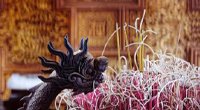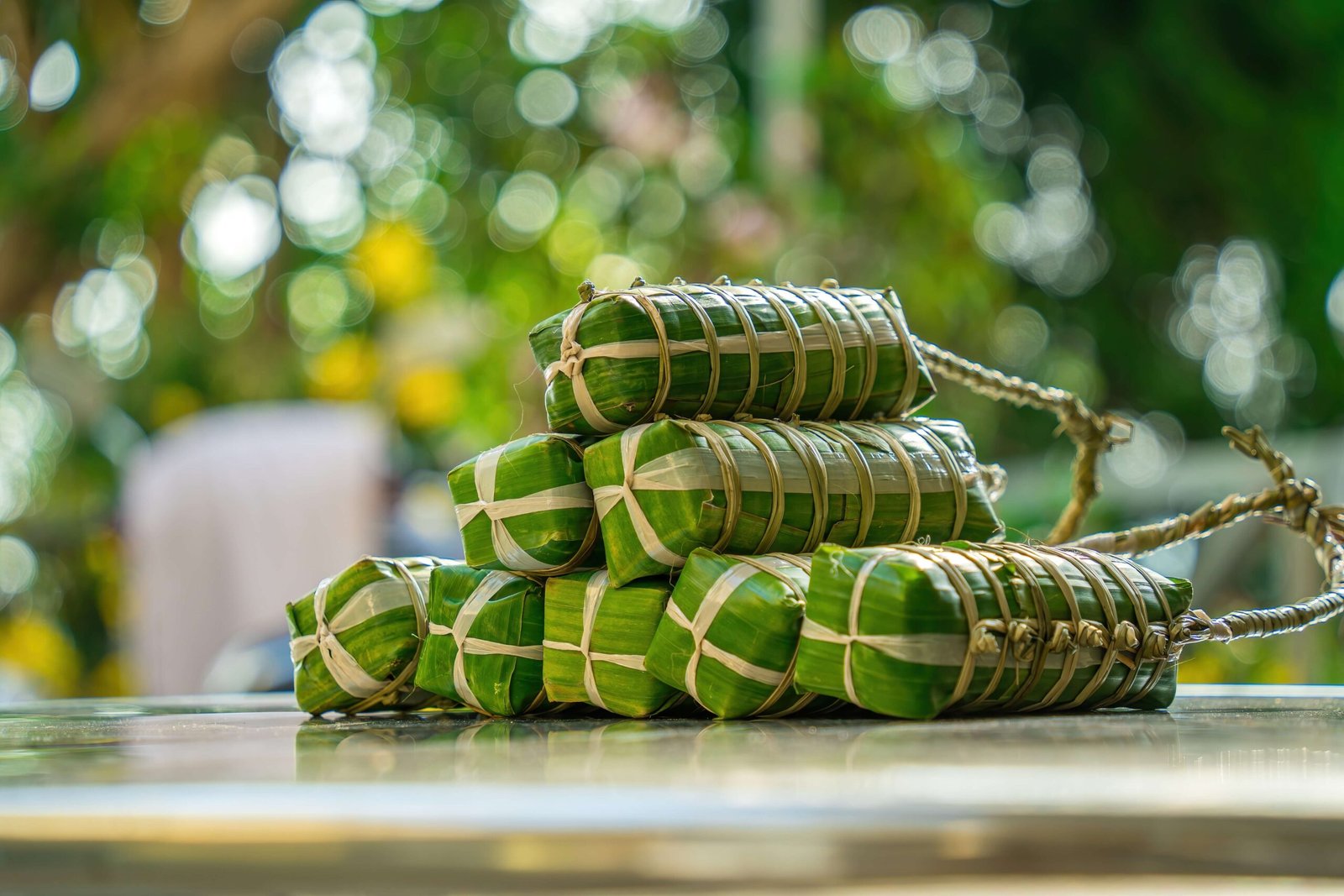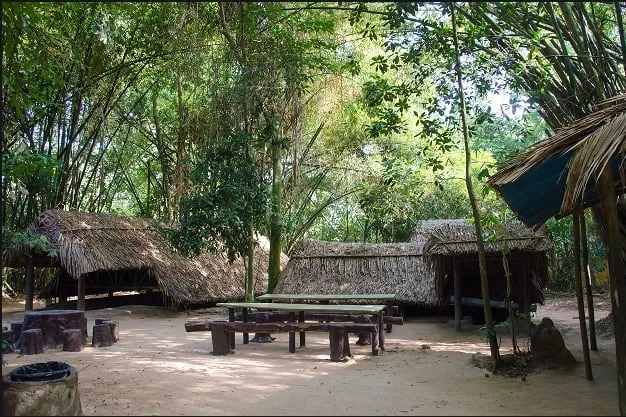Contents
ToggleWhy Bánh Tét Matters at Tết
Bánh tét, a cylindrical sticky rice cake wrapped in banana leaves, is one of the most meaningful dishes of Vietnamese Lunar New Year. More than just food, it carries both practical and spiritual symbolism. Its round shape represents the cycle of time, family unity, and the continuity of generations.
There are two main varieties:
- Savory bánh tét – filled with pork belly and mung beans.
- Sweet bánh tét – filled with bananas, sometimes enhanced with coconut or pandan for extra fragrance.
Whether placed on the family altar as an offering to ancestors or shared during New Year feasts, bánh tét embodies gratitude, respect, and the enduring bonds of kinship.
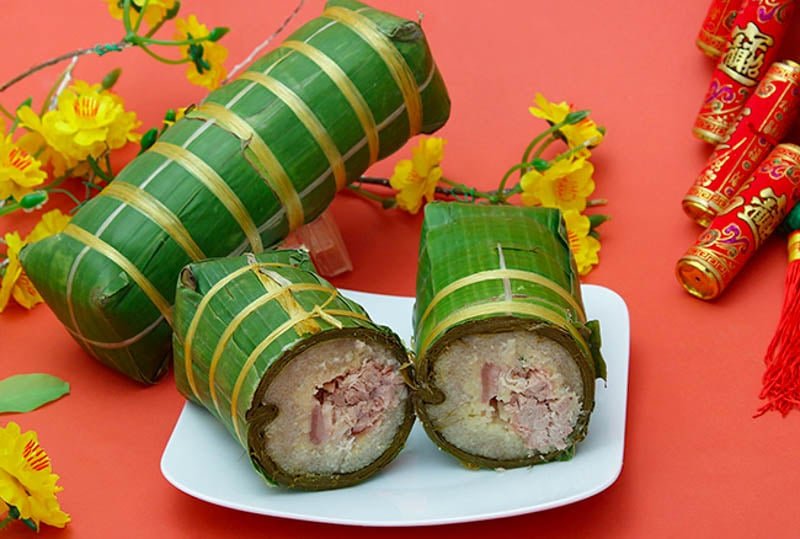
How Bánh Tét is Made
Essential Ingredients
The traditional bánh tét recipe brings together a few humble yet symbolic ingredients:
- Sticky rice – often soaked in coconut milk to give a creamy texture and delicate fragrance.
- Mung beans – steamed, mashed, and spread into a smooth golden paste.
- Pork belly – marinated with salt, sugar, and pepper for a savory depth of flavor.
- Banana leaves – used to wrap the cake, sealing in both aroma and freshness.
In sweet variations, ripe bananas replace pork, while some families add salted duck egg or purple sticky rice for extra richness and festive color.
Preparation & Wrapping
The process begins with banana leaves, which are carefully washed and softened over an open flame until pliable. Cooks then layer the sticky rice, mung beans, and filling before rolling them into a tight cylinder. The cake is bound firmly with strings in a crisscross pattern to ensure it keeps its shape during long hours of boiling.
Cooking the Cake
Traditionally, bánh tét is simmered in large pots for eight hours or more, with water constantly replenished. The slow cooking not only tenderizes the ingredients but also deepens the flavors. While the cakes bubble away, families gather around the fire, telling stories, sharing laughter, and enjoying snacks together. For many households, this overnight vigil is just as important as the cake itself — a cherished moment of connection that ushers in the New Year with warmth and unity.
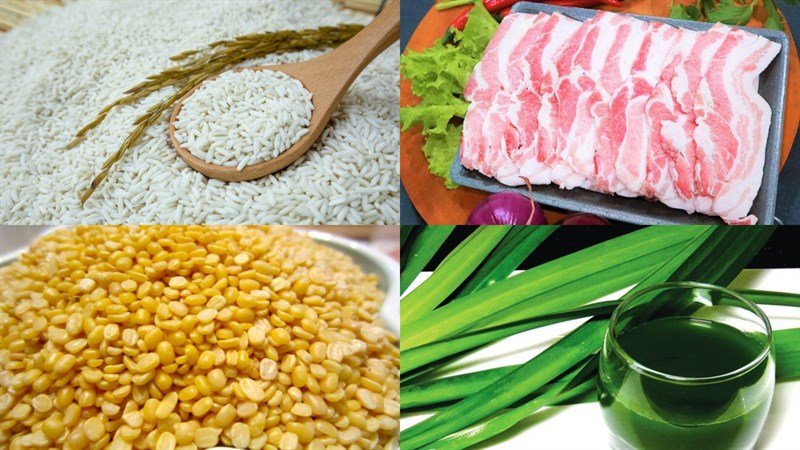
How to Enjoy Bánh Tét Like a Local
Once fully cooked and cooled, bánh tét is unwrapped and sliced into thick, round pieces that reveal its colorful layers. Following tradition, the very first slices are placed on the family altar as an offering to ancestors before being shared among relatives — a gesture of respect and togetherness.
- The sticky rice is soft, fragrant, and slightly chewy.
- The mung bean paste brings a smooth, creamy balance.
- The pork belly or banana filling adds a hearty or subtly sweet richness.
Beyond the festive meal, many families give bánh tét a second life by pan-frying leftover slices. The result is irresistible: a golden, crispy crust on the outside, with a warm, tender center inside. This simple twist turns a traditional dish into a comfort snack enjoyed well beyond New Year’s Day.
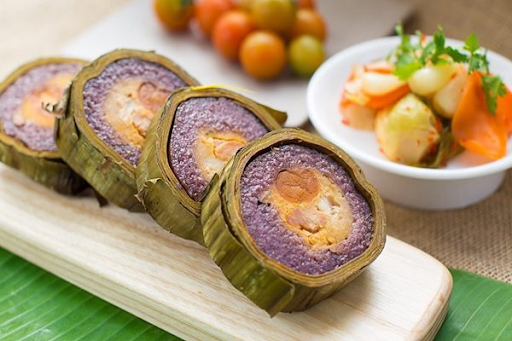
Bánh Tét vs Bánh Chưng
Although they share similar ingredients, bánh chưng and bánh tét carry distinct meanings that reflect the cultural identity of Vietnam’s regions.
- Bánh Chưng (Northern Vietnam) – Square in shape and wrapped in dong leaves, this version is almost always savory, filled with pork and mung beans. Its square form is said to symbolize the Earth, reflecting the Northern emphasis on tradition and rootedness.
- Bánh Tét (Southern Vietnam) – Cylindrical and wrapped in banana leaves, it comes in both savory and sweet varieties. Its round shape represents the cycle of time, prosperity, and renewal, echoing the Southern spirit of openness and abundance.
Together, these two cakes embody Vietnam’s unity in diversity, bridging North and South during Tết. Whether placed on ancestral altars or shared at family meals, they stand as enduring emblems of gratitude, hope, and cultural pride.
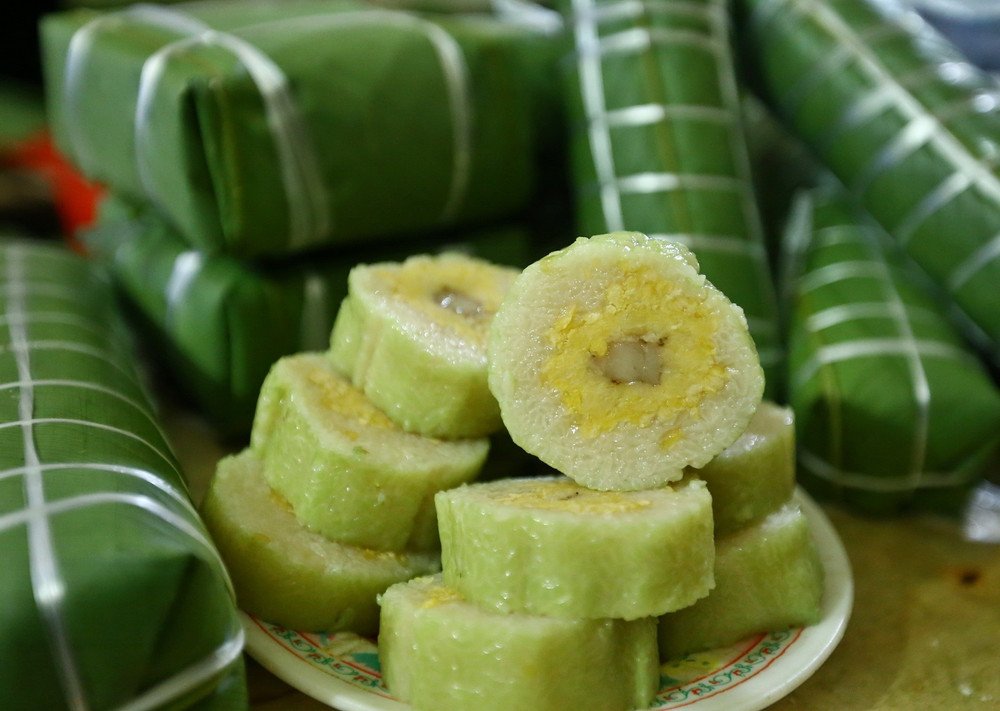
Where to Try Authentic Bánh Tét in Vietnam
If you’re traveling in Southern Vietnam, bánh tét is never far away. In the weeks leading up to Tết, entire markets are filled with the sight of banana-leaf-wrapped bundles stacked high, ready to be gifted or offered to ancestors.
- Mekong Delta – The region is considered the “soul” of bánh tét. Local markets such as those in Cần Thơ are especially famous for bánh tét nếp cẩm, a striking purple sticky rice version that is both delicious and visually stunning.
- Ho Chi Minh City – For a reliable, high-quality taste, long-standing bakeries such as Như Lan are excellent stops:
- 50 Hàm Nghi, District 1
- 64–66–68 Hàm Nghi, District 1
- 365 Hai Bà Trưng, District 3
Outside of major bakeries, you’ll also see bánh tét everywhere during Tết season (late January to mid-February) — sold by street vendors, wet markets, and even supermarkets. Some versions come beautifully packaged in luxury gift boxes, while others are homemade, wrapped with simple raffia string and carrying the rustic charm of family kitchens.
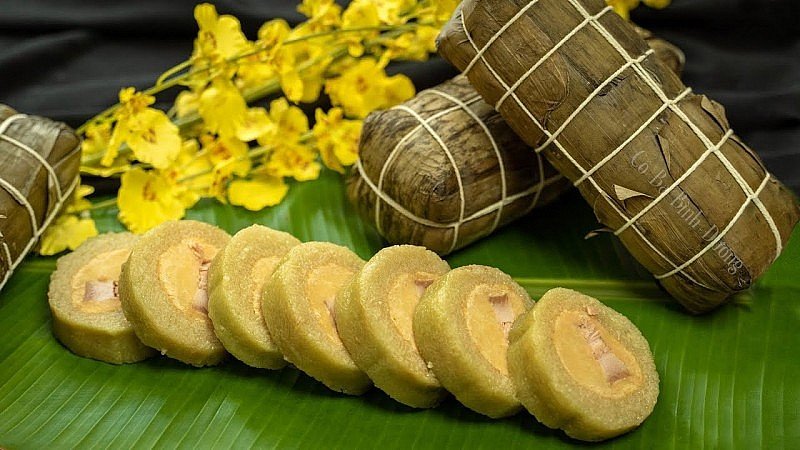
Final Thoughts
In today’s fast-paced world, many families buy ready-made bánh tét instead of preparing it at home. Yet the tradition remains deeply cherished, because bánh tét is more than a dish—it is a symbol of heritage, family, and continuity.
Whether savory or sweet, fresh or fried, bánh tét is a taste of home that connects generations and keeps alive the spirit of Southern Vietnam during every Lunar New Year.



